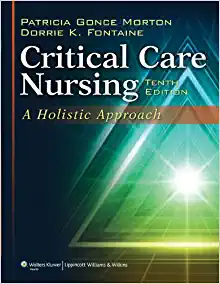Test Bank For Adult Health Nursing 6th Edition By kockrow
Chapter 01: Introduction to Anatomy and Physiology
MULTIPLE CHOICE
- The anatomical term ____ means toward the midline.
| a. | anterior |
| b. | posterior |
| c. | medial |
| d. | cranial |
ANS: C
Definition—toward the midline.
DIF: Cognitive Level: Knowledge REF: Page 1, 2, Figure 1-2
OBJ: 2 TOP: Anatomical terminology
KEY: Nursing Process Step: Assessment MSC: NCLEX: Physiological Integrity
- The smallest living components in our body are
| a. | cells. |
| b. | organs. |
| c. | electrons. |
| d. | osmosis. |
ANS: A
Cells are considered to be the smallest living units of structure and function in our body.
DIF: Cognitive Level: Knowledge REF: Page 4 OBJ: 1
TOP: Structural levels of organization KEY: Nursing Process Step: Assessment
MSC: NCLEX: Physiological Integrity
- The largest organelle, responsible for cell reproduction and control of other organelles, is the
| a. | nucleus. |
| b. | ribosome. |
| c. | mitochondrion. |
| d. | Golgi apparatus. |
ANS: A
The nucleus is the largest organelle within the cell.
DIF: Cognitive Level: Knowledge REF: Page 6 OBJ: 1
TOP: Parts of the cell KEY: Nursing Process Step: Assessment
MSC: NCLEX: Physiological Integrity
- A patient complains of pain in her bladder. In which body cavity are the bladder, lower colon, rectum, and urinary and reproductive systems located?
| a. | Pelvic |
| b. | Mediastinum |
| c. | Pleural |
| d. | Abdominal |
ANS: A
A subdivision called the pelvic cavity contains the lower portion of the large intestine (lower sigmoid colon, rectum), urinary bladder, and internal structures of the reproductive system.
DIF: Cognitive Level: Comprehension REF: Page 2, Table 1-1
OBJ: 14 TOP: Body cavities
KEY: Nursing Process Step: Assessment MSC: NCLEX: Physiological Integrity
- The four phases of cell division all occur in
| a. | diffusion. |
| b. | mitosis. |
| c. | osmosis. |
| d. | filtration. |
ANS: B
During mitosis, the cell goes through four phases: prophase, metaphase, anaphase, and telophase.
DIF: Cognitive Level: Knowledge REF: Page 7, Figure 1-9
OBJ: 5 TOP: Cell division
KEY: Nursing Process Step: Assessment MSC: NCLEX: Physiological Integrity









Reviews
There are no reviews yet.